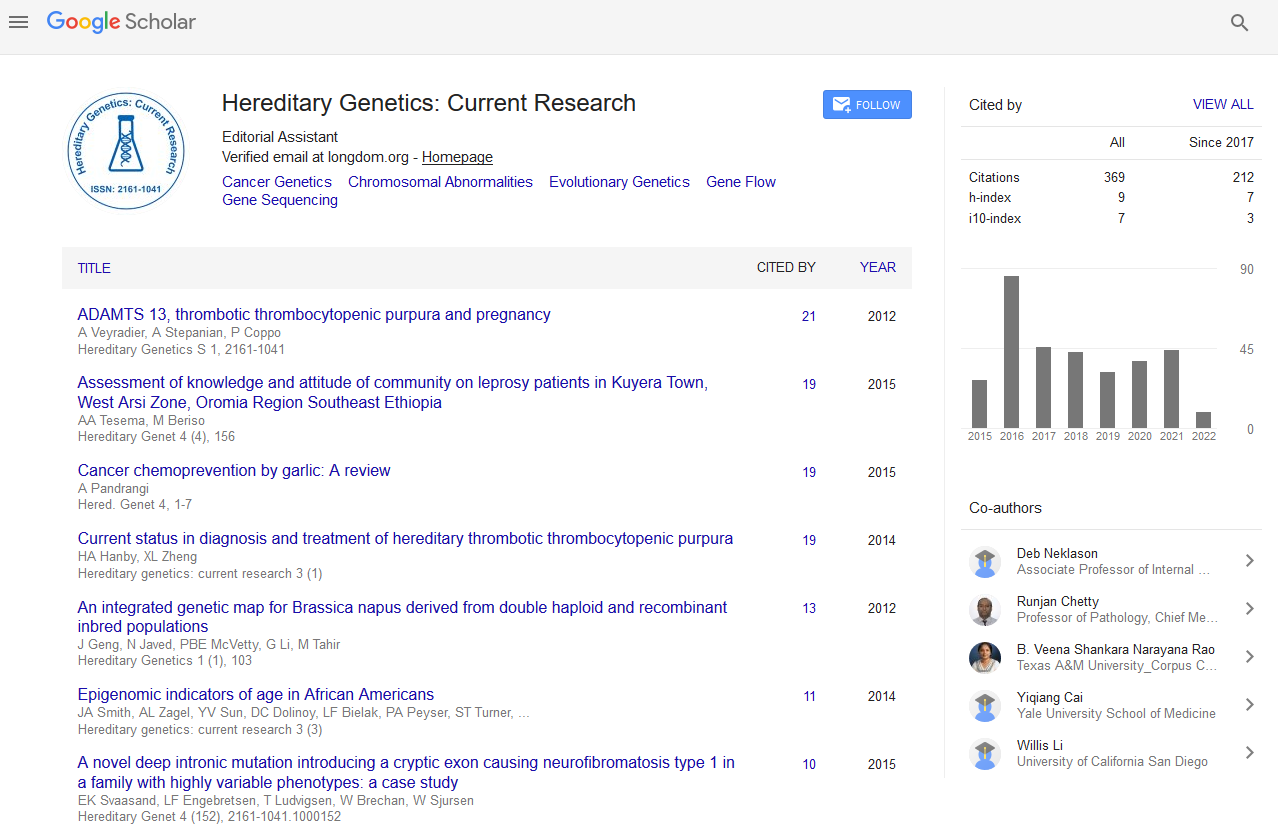PMC/PubMed Indexed Articles
Indexed In
- Open J Gate
- Genamics JournalSeek
- CiteFactor
- RefSeek
- Hamdard University
- EBSCO A-Z
- NSD - Norwegian Centre for Research Data
- OCLC- WorldCat
- Publons
- Geneva Foundation for Medical Education and Research
- Euro Pub
- Google Scholar
Useful Links
Share This Page
Journal Flyer

Open Access Journals
- Agri and Aquaculture
- Biochemistry
- Bioinformatics & Systems Biology
- Business & Management
- Chemistry
- Clinical Sciences
- Engineering
- Food & Nutrition
- General Science
- Genetics & Molecular Biology
- Immunology & Microbiology
- Medical Sciences
- Neuroscience & Psychology
- Nursing & Health Care
- Pharmaceutical Sciences
Abstract
Genetic Diversity and the Impact of Geographical Location on the Relationships Between Phoenix dactylifera L. Germplasms Grown in Saudi Arabia
Phoenix dactylifera L. is an important crop in the Middle East and North Africa. Date palm diversity faces risks including salinity and lack of rain. It is important to understand the genetic diversity of these germplasms. The objectives of this study were to investigate the degree of dissimilarity and to examine the impact of location on the genetic relationship between local cultivars in Saudi Arabia. The current study included 91 famous date palm accessions and a group of non-famous cultivars, collected from three main regions that are important in date palm cultivation in Saudi Arabia, and twenty-four nuclear microsatellite loci were tested. High polymorphism content was detected in some loci, making it possible to identify and distinguish strains using four markers. Examination of the genetic variation between local date palm germplasms showed a wide range of genetic dissimilarity (0-0.950). For the neighbor-joining algorithm tree, structural analysis and discrimination analysis for principal component, local genotypes can be classified within three main clusters. Cultivars of some regions were grouped according to their geographical location. The results of this study will be useful for those interested in strain identification, classification and conservation as well for those interested in improving fruit production.


